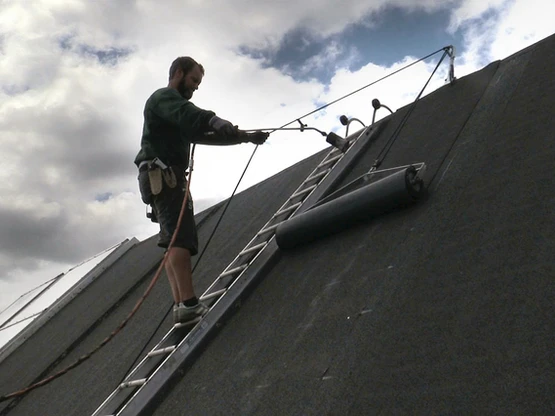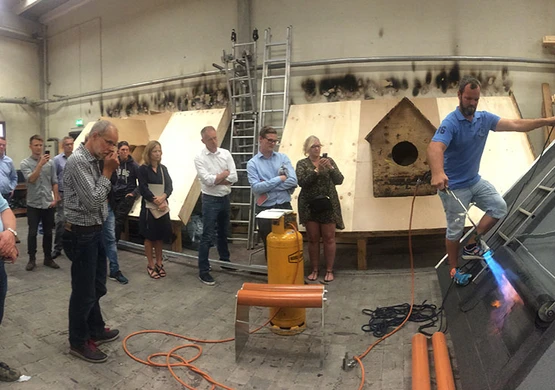After years of tweaking Scrum for our processes, here’s our thought on what Scrum does to the products we develop
We’ve been talking about why we wanted another framework than Waterfall and ended up with Scrum, and we’ve giving some insights on how we’ve tweaked Scrum for physical inventing and applied it to our everyday processes.
But does Scrum actually help us create better products?
For the past year we’ve been working on “Slope System” – a system that makes applying rolls of tar to the roof easier and safer for the roofers.

Slope System was made in collaboration with many stakeholders, and to simplify communication and make the initial planning easier it started out as a linear Stage/Gate project.
As we knew the system was going to be complex, we wanted a lot of iterations, testing and validation, so as soon as the project plan was in place we started applying Scrum to the project:
We divided a years worth of milestones into 4-week sprints and set up additional workshops between the sprints for continuous validation. Furthermore the project got boosted with resources by a team of students from DTU.

The workshops gave our system valuable inputs from processional roofers.
During the past year 10 initial ideas for a concept became 2 mockups, before we ended up with 1 prototype.
Did Scrum matter?
Roofing is a pretty specialized business, and by developing in short, agile sprints, we we’re able to get feedback based on the specialized knowledge roofers have.
Developing in agile and iterative steps allows more research and more frequent verification of the progress – change something on the product, concept or system based on the feedback and get the change tested and validated fast.
In more nerdy terms: By adding Scrum to the process, we got shorter loops with room for additional iterations of the product, and every time we began a new loop and opened a new iteration we expanded our solution space. If we don’t expand our solution space adequate, we might miss out on the best, most original and smart solutions.
Of course it’s a balance between expanding the solution space and spending the right amount of time and money on the project. But it’s our claim that by using Scrum we end up with a smarter product in the end because we have a greater solution space than traditional methods gives us.
About the series: In the search of a more agile project management methodology we stole the Scrum design process from software developers and made it our own. By turning our back on the traditional and linear waterfall methods we’ve achieved a more dynamic, cost efficient and successful way of inventing.
In this series we want to explain why we made the change to Scrum – and how we’ve applied it.
This is part 3 of 3.
If you don’t want to miss out on our thoughts on product development, you should sign up for our monthly newsletter.
